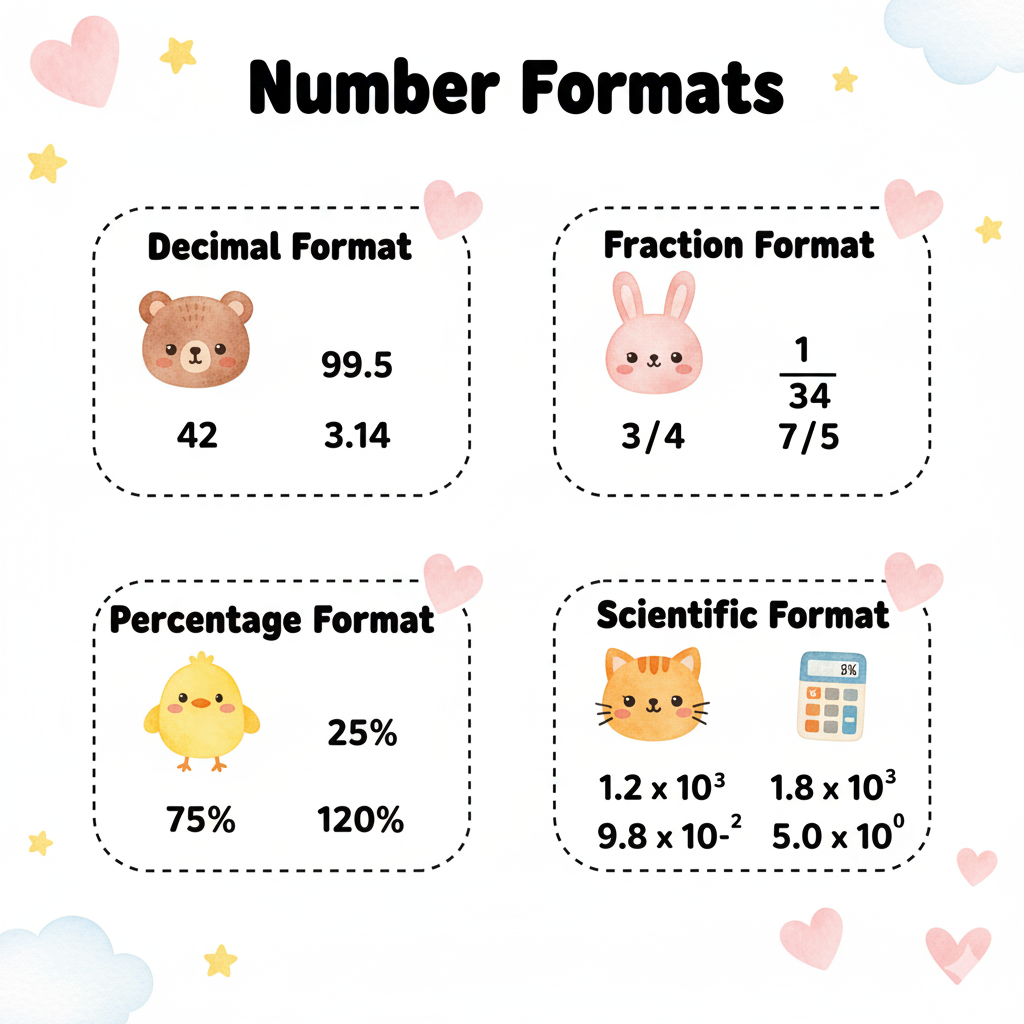Aptitude
Number

-
The number system is a structured way to represent and classify numbers. It defines sets of numbers and their relationships on the number line.
Common categories include natural numbers, whole numbers, integers, rational numbers, irrational numbers, real numbers, complex numbers, etc.
Natural Numbers (N): The counting numbers starting from 1: N = {1, 2, 3, 4, 5, …}. These are positive integers used for counting.
Whole Numbers (W): Natural numbers together with 0: W = {0, 1, 2, 3, …}. Also called non-negative integers.
Integers (Z): All whole numbers and their negatives: Z = {… , −3, −2, −1, 0, 1, 2, 3, …}. Integers have no fractional or decimal part.
Rational Numbers (Q): Numbers that can be expressed as a fraction \(\tfrac{a}{b}\), where \(a\) and \(b\) are integers and \(b \ne 0\). Rational numbers have either terminating or repeating decimal expansions. Examples: \(\tfrac{1}{5}=0.2,\ \tfrac{2}{3}=0.\overline{6}\).
Irrational Numbers: Numbers that cannot be written as a ratio of two integers. Their decimal expansions are non-terminating and non-repeating. Example: \(\sqrt{2}\), \(\pi\).
Real Numbers (R): All rational and irrational numbers; any number that can be located on the number line.
Complex Numbers (C): Numbers of the form \(a + bi\), where \(a\) and \(b\) are real and \(i\) is the imaginary unit (\(i^2 = -1\)). Real numbers are the special case when \(b = 0\).
Imaginary Numbers: Multiples of \(i\), for example \(2i, -3i\). These do not lie on the real number line but on the imaginary axis in the complex plane.
Even Numbers: Integers divisible by 2 (e.g., 0, 2, 4, 6, …).
Odd Numbers: Integers not divisible by 2 (e.g., 1, 3, 5, 7, …).
Prime Numbers: Integers greater than 1 that have exactly two positive divisors: 1 and themselves. Examples: 2, 3, 5, 7, 11.
Composite Numbers: Integers greater than 1 that have more than two factors (e.g., 4, 6, 8, 9, 10).